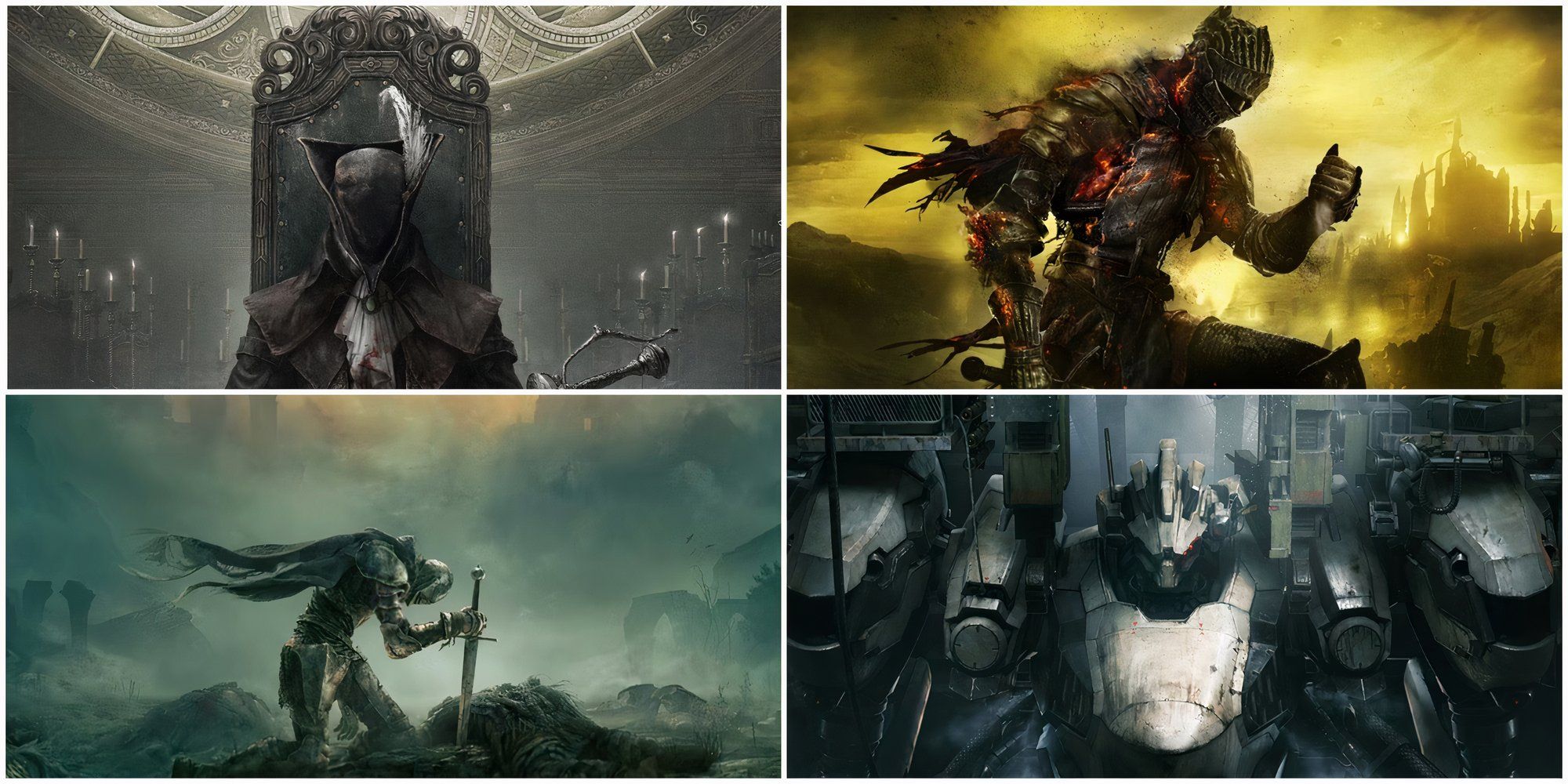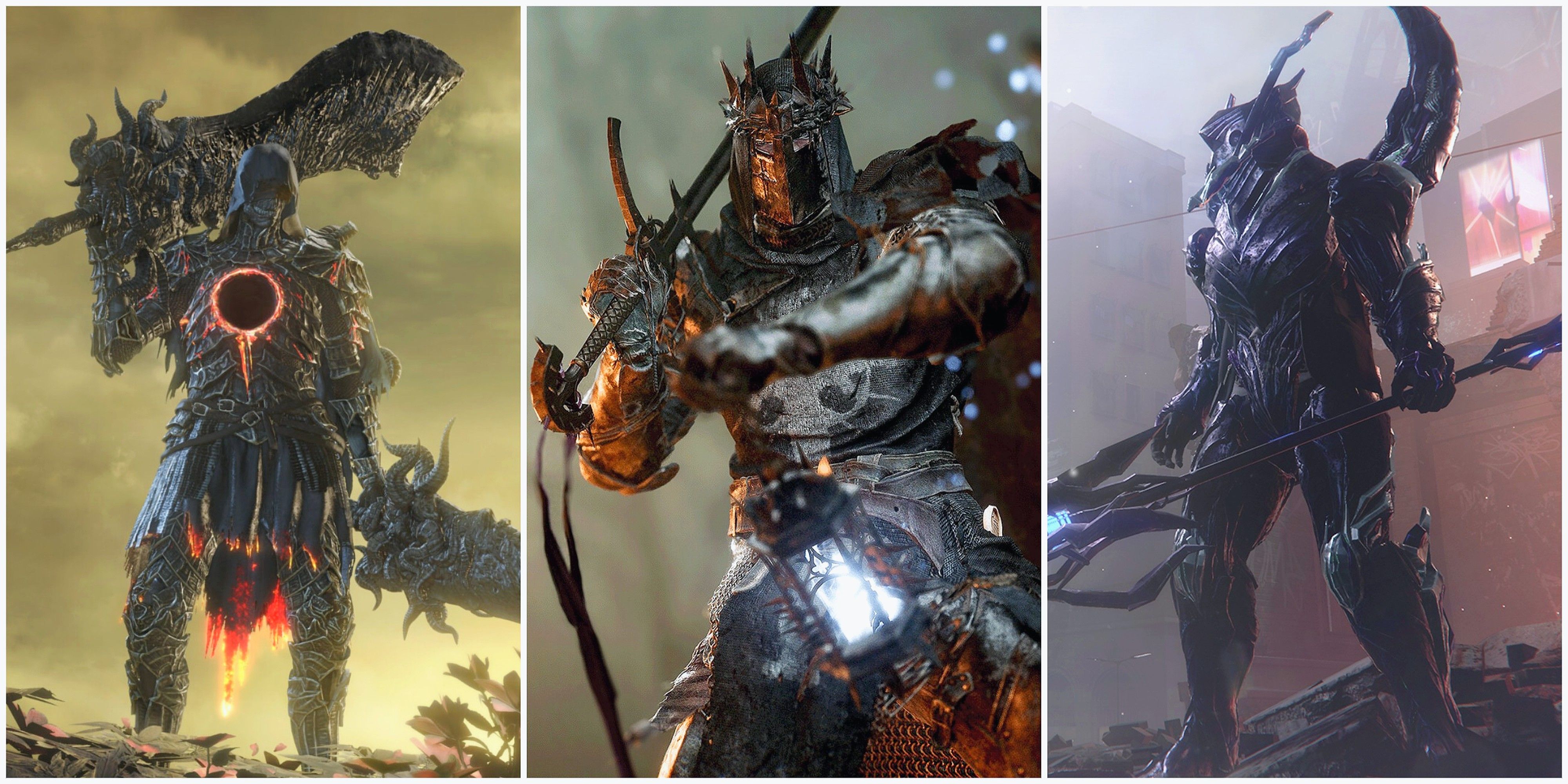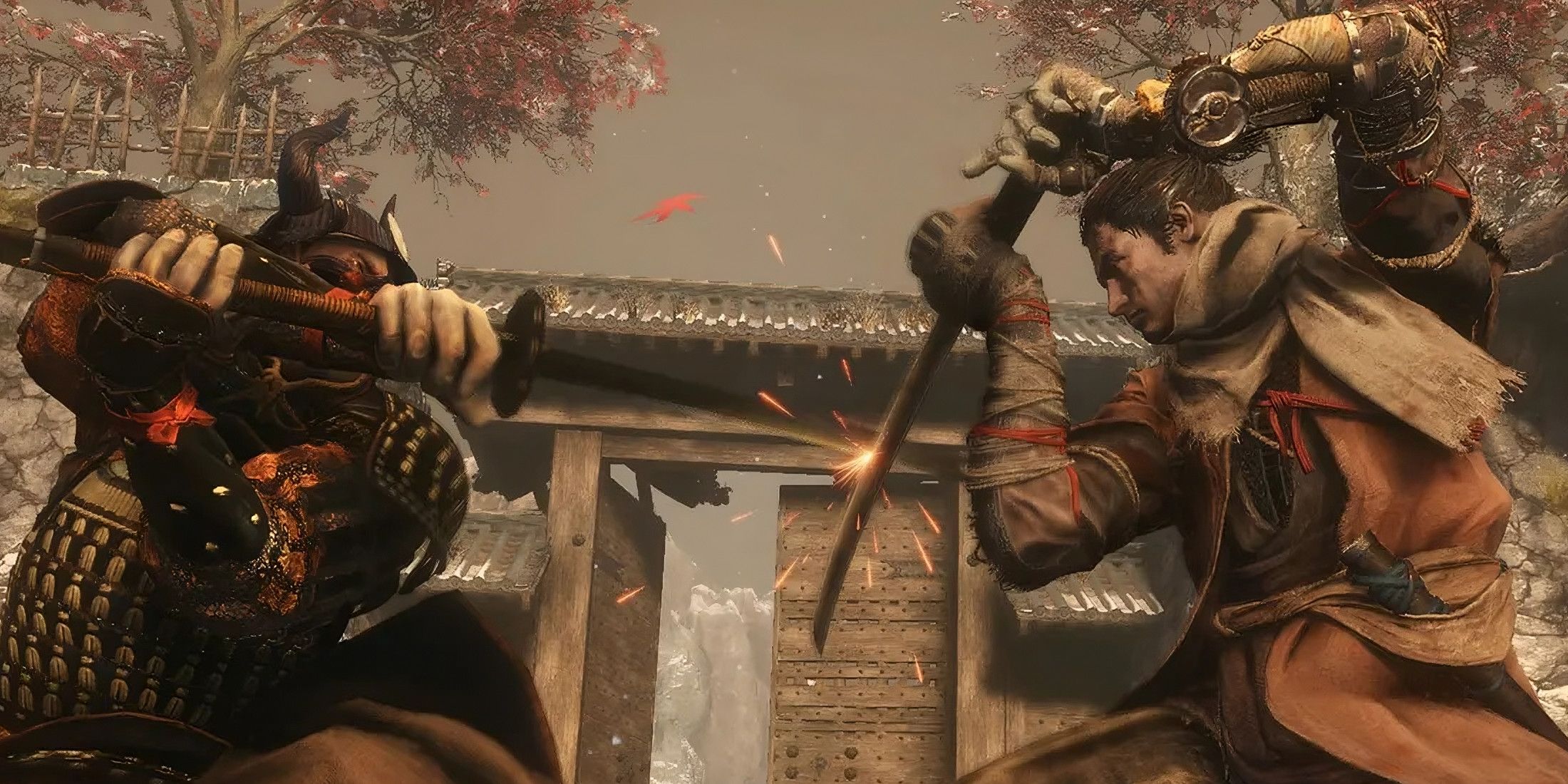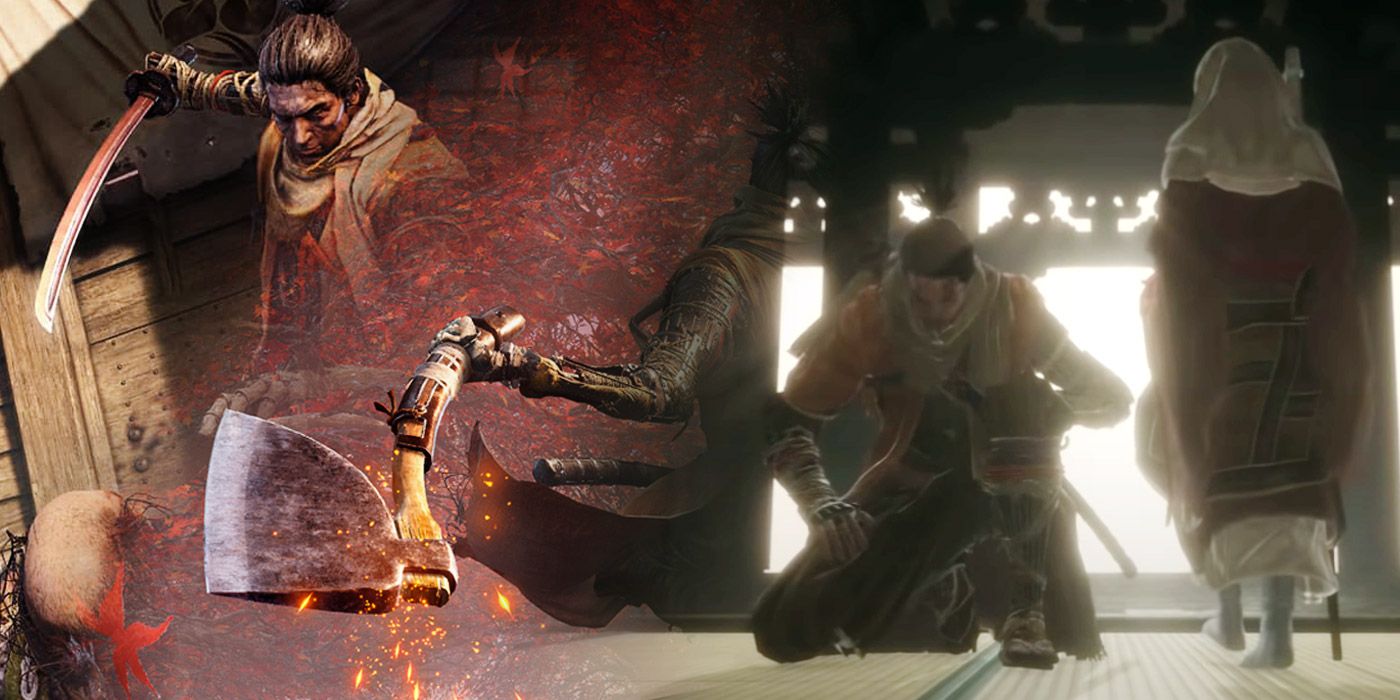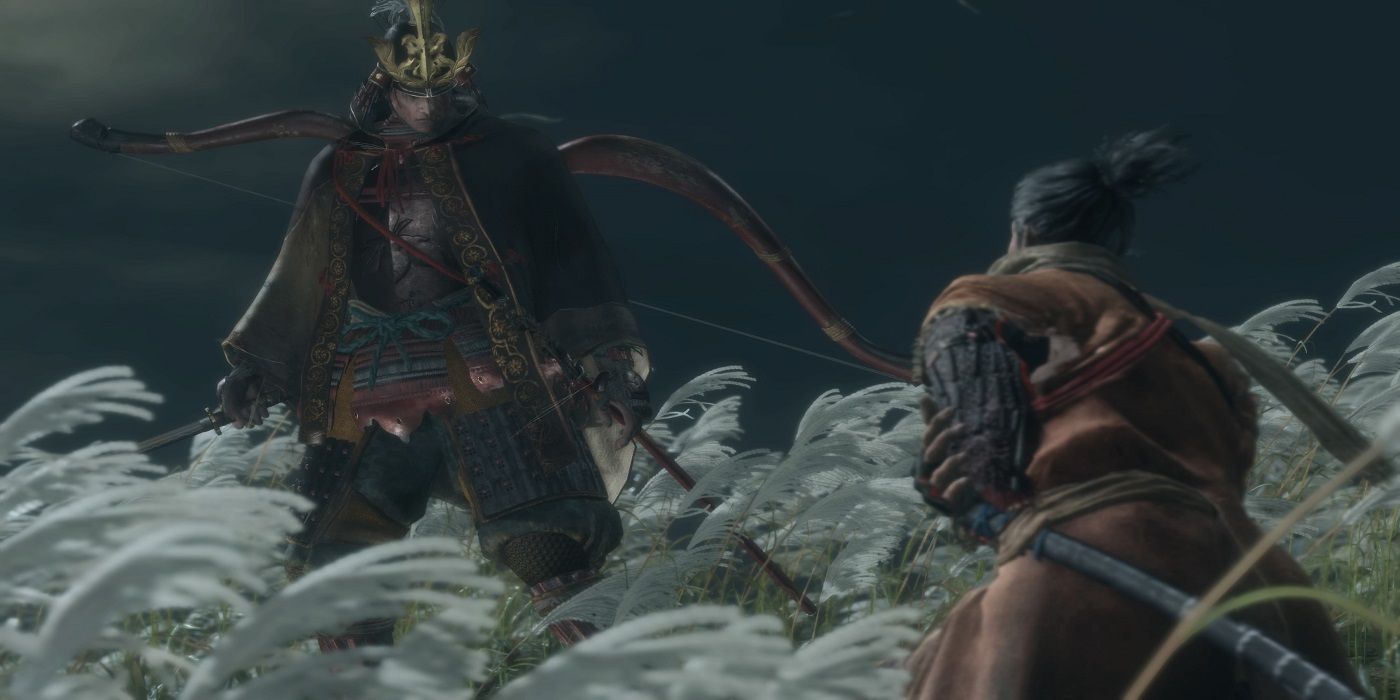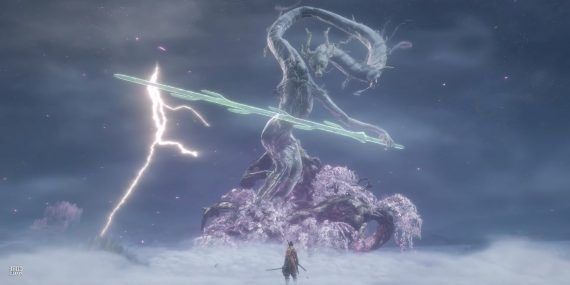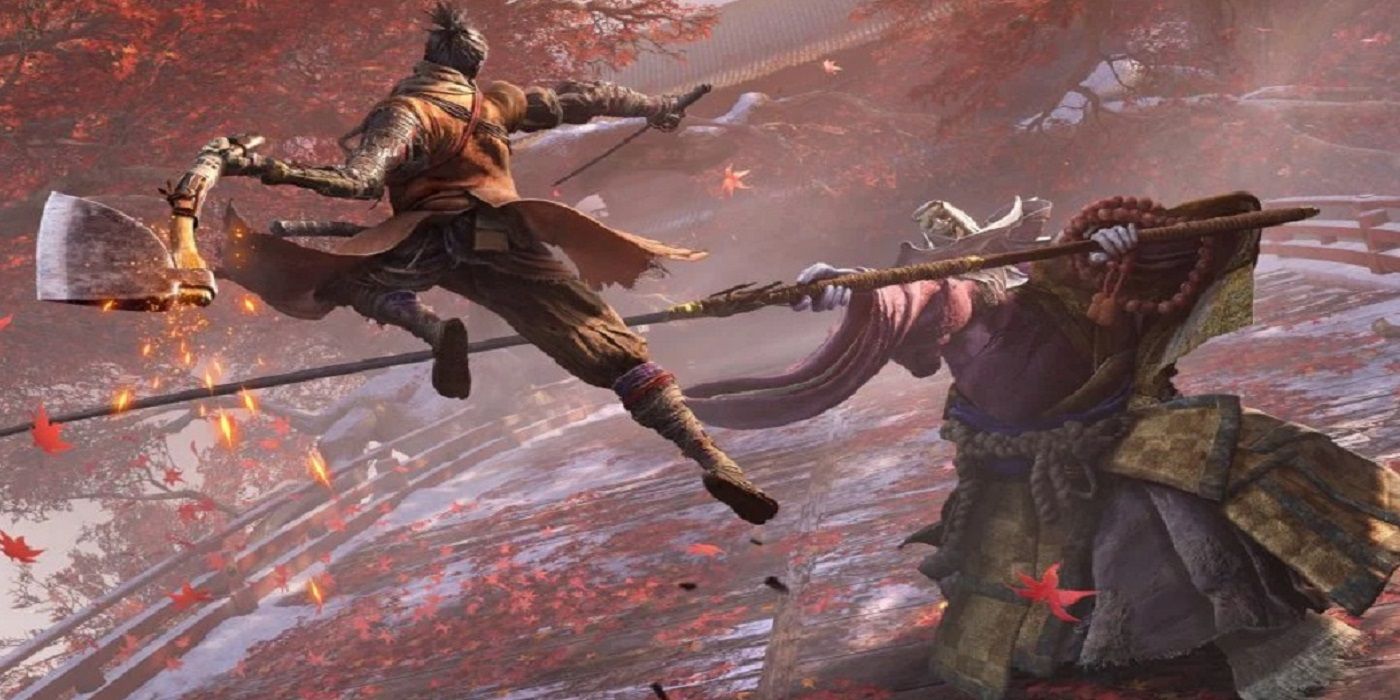From Software's latest release, Sekiro: Shadows Die Twice, launched to critical acclaim as the next installment in the developer's list of brutally difficult action-adventure titles. However, while the game was well received among many fans and critics, leading up to Sekiro's Game of the Year win via several venues, some players found that one key criticism held it back from being the developer's best title.
While the combat in Sekiro: Shadows Die Twice wildly succeeds at what it is attempting to accomplish, there is a severe lack of customization that would otherwise allow players to tackle different encounters in different ways. This isn't the type of issue that ruins the experience for every player, but for anyone who the quick-action combat didn't immediately click with, a lack of customization can make players feel extra pigeon holed by the limited design.
How Lacking Customization Limits Players
The main reason that Sekiro lacking the type of customization that Bloodborne's builds offers is that, if a player comes up against a difficulty wall, they end up having no choice but to beat their heads against it. In other From Software titles that allow different levels of customization, running into an overly difficult boss fight or encounter can often be offset by grinding levels, upgrading weapons, or entirely changing gearsets. Unfortunately for Sekiro, this kind of external opportunity to meter out the difficulty of a specific fight through all of these methods just doesn't exist, and so now the only way to get through the game is to trial and error until the player finally succeeds.
For the more hardcore players, including those who tackle the most difficult Dark Souls challenges, the spikes for Sekiro is totally fine and likely won't affect those fans' enjoyment. However, more casual players likely won't be prepared to endlessly fight the same enemy with little to no way of becoming stronger, and might be more inclined to quit when they hit their first wall. This may have been an intentional design choice by From Software in order to keep the game's combat as tight as possible, but it is far more restrictive than any other game the developer has made in the past.
One Ending Sets Up For a new Region
While none of the endings in Sekiro are considered to be the "true" or "canon" by From Software, however, the Return Ending is often considered to be the "best" or "happiest" choice for resolving the main conflict. As a result of this good end, many players have begun to consider it the closest recognized to fitting into some sort of canon among the fan community. Not only is this ending the only one where both the playable character, The Wolf, and Kuro survive, it is also the only one that primes a continuation for the story.
So, if From Software was planning on revisiting Sekiro: Shadows Die Twice with a future installment, the return ending is the obvious choice for how to continue forward, especially if The Wolf is intended to return for the next game. However, based on what happens in this ending, it can be implied that the next step in the narrative would involve Kuro and The Wolf heading west, likely leaving Japan all-together. With this being the case, a new region, likely being feudal Korea, based on the depiction of the Devine Dragon, who's home would make for the most likely destination for the leading characters' travels.
How Travelling Can Open Up Customization
Looking at the fictional history of Japan in Sekiro and comparing it to real-life history of both the real-world country and the surrounding regions of Southeast Asia, travel may lead to dangerous new threats for Wolf to run into. The Mongol invasion for one, as depicted in another recent Samurai/Shinobi adventure title, Ghost of Tsushima, is often pointed as being a major reason for the development of new weapons in the region to fight against new types of armor. So, sending the player through a new region to fight new enemies could mean that The Wolf's trusty Kusabimaru may no longer be a viable option to cut down opponents.
As a result of this need to change and adapt in order to better combat the strange new opponents that the player may face in a brand new region, there may be an option to finally introduce brand new weapon types. Bringing the next game in the series closer to other Souls-likes or even leaning in on comparisons to Bloodborne could make the game much more accessible to fans of From Software that didn't resonate well with Sekiro. These new weapons can also take the form of equipment specific to whichever region to the west that the story takes the player, or can utilize some of the gear that players have already faced off against.
Using Existing Weapons to Give Players Better Variety
One way that players aren't able to fight off some of the larger, destructive enemies and bosses of Sekiro: Shadows Die Twice, is with slow, heavy weapons that can do large chunks of damage at the cost of fewer attacks per combo. Anyone who enjoyed using ultra greatswords in Dark Souls or Ludwig's Holy Blade in Bloodborne would likely have felt their preferred combat style left out without these weapons that excel at crowd control and singular, measured blows. Granting the Wolf a weapon like the Corrupted Monk's Naginata could fill this gap, giving players a new way of confronting enemies, especially those that only have small windows to land a single hit at a time.
Allowing Bloodborne to influence Sekrio 2 in order to introduce a much more limited selection of weapons with their own unique combat styles may fit the game's combat better than Dark Souls' massive arsenal. All-together, Sekiro is a game that punishes players for trying to play the way they play Dark Souls, which is a positive as the developer attempts to separate the different IPs. However, in that effort, From Software may have robbed players of the freedom to choose how to interact with the game, making for both a tighter experience, but also a much more restricted one.
Sekiro: Shadows Die Twice is available now for PC, PS4, and Xbox One.

